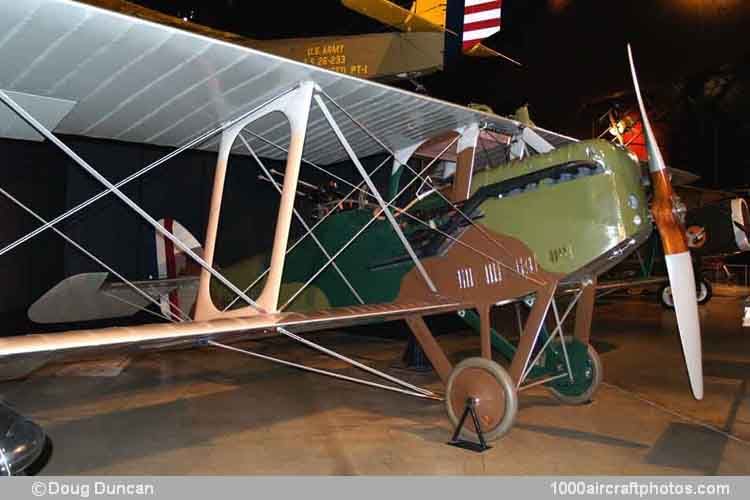The first of six prototypes flew in August 1918, after satisfying testing 3,525 production aircraft were ordered. Seven aircraft were finished at the Armistice, and series production was halted after 25 aircraft were finished. Eight more aircraft were produced for other roles. Here are the numbers produced, the aircraft tested at McCook Field are also stated with Project Numbers in brackets:
LUSAC-11 (Lepère US Army Combat)
s/n 40015 to 40017, 40115 to 40117, 42128 to 42152, total 31.
(40015 – "P-53", 40115 – "P-70", 42129 – "P-44", 42138 – "P-54").
LUSAC-25 (Lepère US Army Combat)
s/n 40023 to 40025, total 3.
LUSAGH-11 (Lepère US Army Ground Harassment)
s/n 40020, 40021, total 2
(40021 – "P-89")
LUSAGH-21 (Lepère US Army Ground Harassment)
s/n 40022, total 1
LUSAO-11 (Lepère US Army Observation)
s/n 40012, 40013, total 2
(40012 – "P-65")
The pictured example was one of two that reach the Allied test facility at Orly, Paris, France, before the Armistice, however, saw no combat. The USAF Museum obtained it from the Museé de l'Air et de l'Espace, Le Bourget, Paris, in 1989, and was put on display in the original 1918 markings after a three year restoration.
The name Lepère has been noted in several publications written as:
Le Pere, LePere, Lepere, le Pere, LePère, Le Père, LePére, Le Pére, LePeré, and Le Peré."
